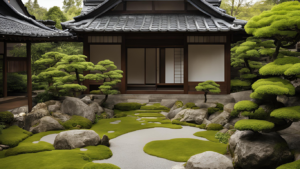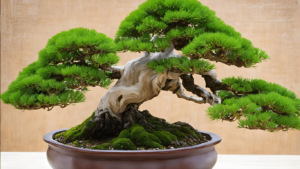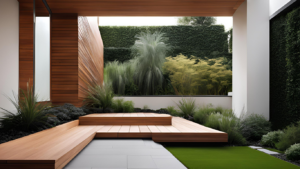Why Japanese Garden Style is the Perfect Zen Retreat for Your Home
Imagine stepping into your backyard and instantly feeling a sense of calm and serenity that’s the magic of a Japanese garden style. Inspired by centuries old traditions, this landscaping approach blends natural beauty, balance, and mindfulness, creating a Zen retreat right at home. Whether you have a small urban space or a spacious backyard, incorporating Japanese garden elements like stone pathways, koi ponds, bamboo fences, and minimalist greenery can transform your outdoor area into a peaceful sanctuary. The best part? You don’t need a huge budget to start! With a few well placed rocks, simple water features, and the right plants, you can craft your own Japanese inspired oasis that promotes relaxation and harmony.
Key Elements of a Traditional Japanese Garden

Creating a traditional Japanese garden isn’t just about adding a few plants and stones it’s about crafting a harmonious, balanced space that reflects nature’s simplicity and elegance. The core principles revolve around asymmetry, minimalism, and symbolism, incorporating elements like water features, stone pathways, bonsai trees, moss, and bamboo to create a peaceful and meditative environment. Whether you’re designing a small Zen courtyard or a spacious backyard retreat, understanding the essential components will help you bring authentic Japanese aesthetics into your home garden.
Stone & Water: The Soul of Japanese Gardens
One of the most distinctive features of a Japanese garden design is the use of stones and water to represent natural landscapes. Stepping stones, rock arrangements, and gravel paths symbolize mountains and rivers, while koi ponds and tsukubai (stone water basins) bring the soothing sound of water into your space. Even in a dry rock garden (karesansui), raked gravel mimics the movement of waves, embodying the essence of flowing water without the need for an actual pond.
Lush Greenery & Symbolic Plants
Plants in a Japanese style garden are chosen carefully to maintain a seasonal, ever-changing beauty. Bamboo, pine trees, Japanese maples, moss, and cherry blossoms create an organic yet structured look. Each plant holds meaning—pines symbolize longevity, while maples represent the beauty of change. Low-maintenance plants like ferns and azaleas add layers of texture, making the space feel natural yet intentionally designed.
How to Create a Japanese Garden at Home

Transforming your outdoor space into a Japanese style garden is all about embracing nature, harmony, and simplicity. Whether you have a spacious backyard or a small urban courtyard, you can design a peaceful Zen retreat by incorporating key elements like gravel pathways, stone lanterns, bamboo fences, and water features. The goal is to create a tranquil atmosphere that encourages relaxation and mindfulness. Let’s break it down into the essential steps to make your very own traditional Japanese garden at home.
Choosing the Right Plants for an Authentic Look
A Japanese inspired garden relies on carefully selected plants that bring a sense of seasonal beauty and natural elegance. Consider adding Japanese maples, bamboo, moss, ferns, azaleas, and cherry blossoms to create a layered, organic look. Evergreens like pine trees add structure and year-round greenery, while low-maintenance ground covers like moss bring a soft, Zen-like touch to your garden.
Adding Water Elements for a Soothing Vibe
Water plays a vital role in a traditional Japanese garden, symbolizing calmness and renewal. If space allows, a koi pond or a tsukubai (Japanese stone water basin) can add an authentic touch. For smaller spaces, a mini bamboo fountain or a raked gravel dry garden (karesansui) can bring the same serene effect without requiring much maintenance. The sound of trickling water enhances the meditative atmosphere, making your garden a perfect escape from daily stress.
Japanese Garden vs. Modern Landscaping: Key Differences

When it comes to outdoor design, Japanese gardens and modern landscaping offer two very distinct approaches. A Japanese style garden is all about natural harmony, asymmetry, and spiritual balance, while modern landscaping leans more toward structured design, geometric patterns, and low-maintenance elements. Japanese gardens focus on organic elements like rocks, water, and plants, creating a serene, timeless retreat, whereas modern landscapes often feature concrete paths, artificial lighting, and sleek hardscapes for a clean, contemporary look. Understanding these key differences can help you choose the best style for your home.
Natural vs Structured Design
A traditional Japanese garden follows the principles of Wabi Sabi (finding beauty in imperfection) and Shakkei (borrowing scenery), integrating natural elements seamlessly into the surroundings. Rocks, moss, and flowing water features create a tranquil, meditative space. On the other hand, modern landscaping prioritizes clean lines, minimalist designs, and artificial materials, often using symmetry and defined edges to achieve a sleek, organized aesthetic.
Water and Greenery : A Contrast in Approach
In a Japanese style garden, water is a central element, symbolizing purity and renewal. Whether through a koi pond, a tsukubai (stone water basin), or a dry rock garden (karesansui), water plays a vital role in enhancing the natural ambiance. Modern landscapes, however, may incorporate water features sparingly or use reflective pools and fountains as decorative statements rather than spiritual elements. Similarly, lush greenery and layered plantings are key to a Japanese garden’s natural appeal, while modern landscaping often favors drought-resistant plants and low-maintenance greenery for practicality.
Conclusion
Creating a Japanese style garden at home is more than just arranging rocks and plants it’s about designing a harmonious, tranquil retreat that connects you with nature. Whether you choose a Zen rock garden, a lush tea garden, or a koi pond, the key is to focus on balance, simplicity, and natural beauty. Remember to use asymmetry, flowing water features, and traditional Japanese plants to capture the authentic aesthetic. If you’re just getting started, begin with small elements like a tsukubai (stone water basin) or a bamboo fence, and gradually build your space.
FAQ
1 What is the key concept behind a Japanese garden?
A Japanese garden focuses on harmony, simplicity, and natural beauty, inspired by Zen philosophy. It often includes elements like rocks, water features, moss, and carefully pruned trees to create a peaceful, meditative space.
2 How do I start designing a Japanese style garden at home?
Start small ! Incorporate natural elements like gravel pathways, stone lanterns (tōrō), a bamboo fence, or a water basin (tsukubai). If you have space, consider adding a koi pond or a small bridge for a more authentic feel.
3 What are the essential plants for a Japanese garden?
Some must have plants include Japanese maple (Acer palmatum), bamboo, cherry blossoms (Sakura), moss, azaleas, and dwarf pines. These plants thrive in different seasons, keeping your garden beautiful year round.
4 What is the difference between a Zen garden and a traditional Japanese garden?
A Zen garden (karesansui) is minimalistic, using raked gravel, sand, and rocks to represent nature in an abstract way. A traditional Japanese garden is more lush, featuring water elements, plants, and bridges to create a more immersive landscape.
5 How can I maintain a Japanese garden easily?
Regular pruning, moss care, and keeping gravel/sand neatly raked will help maintain the serene look. Using low maintenance plants and a proper drainage system can also reduce upkeep.